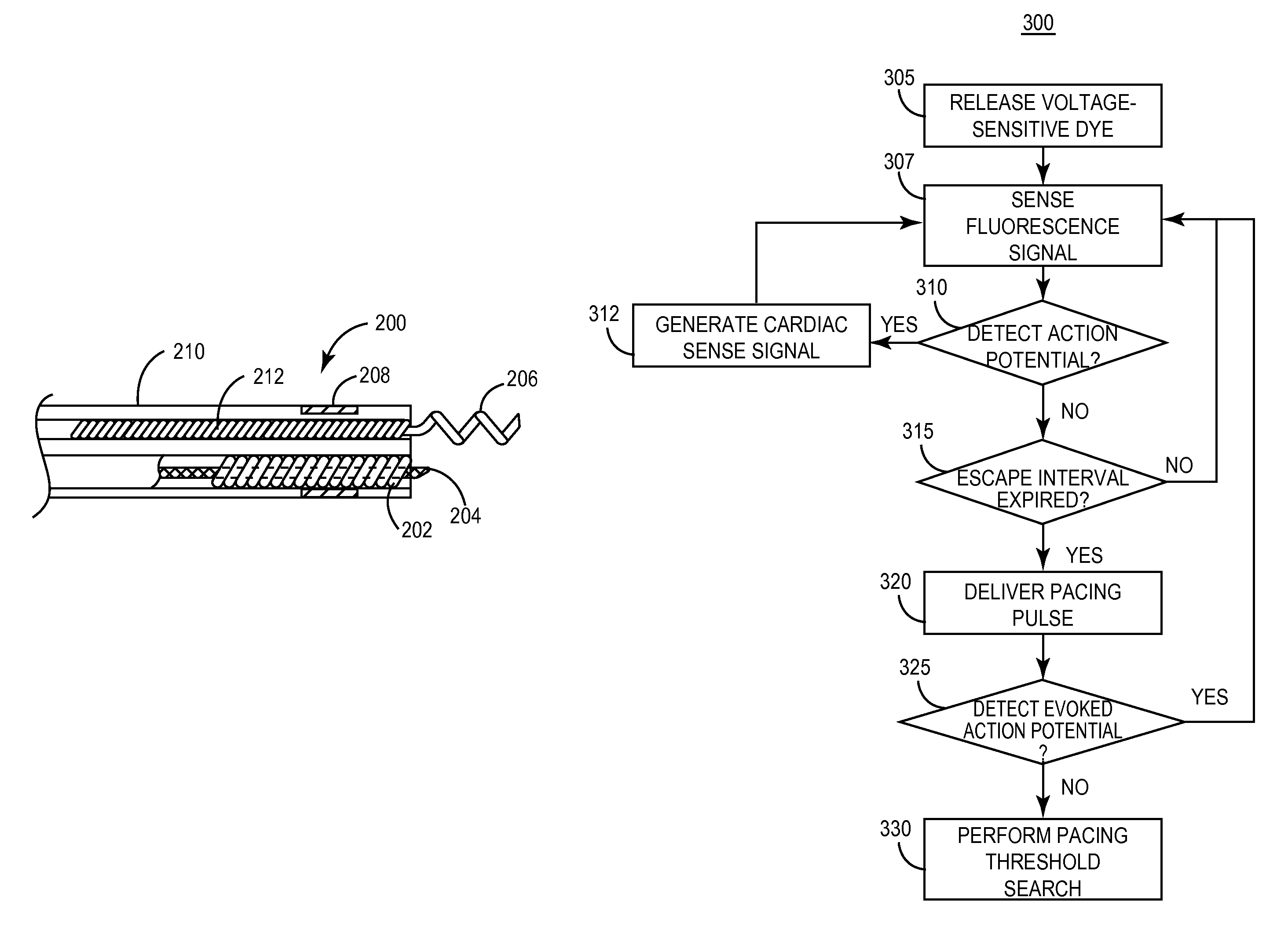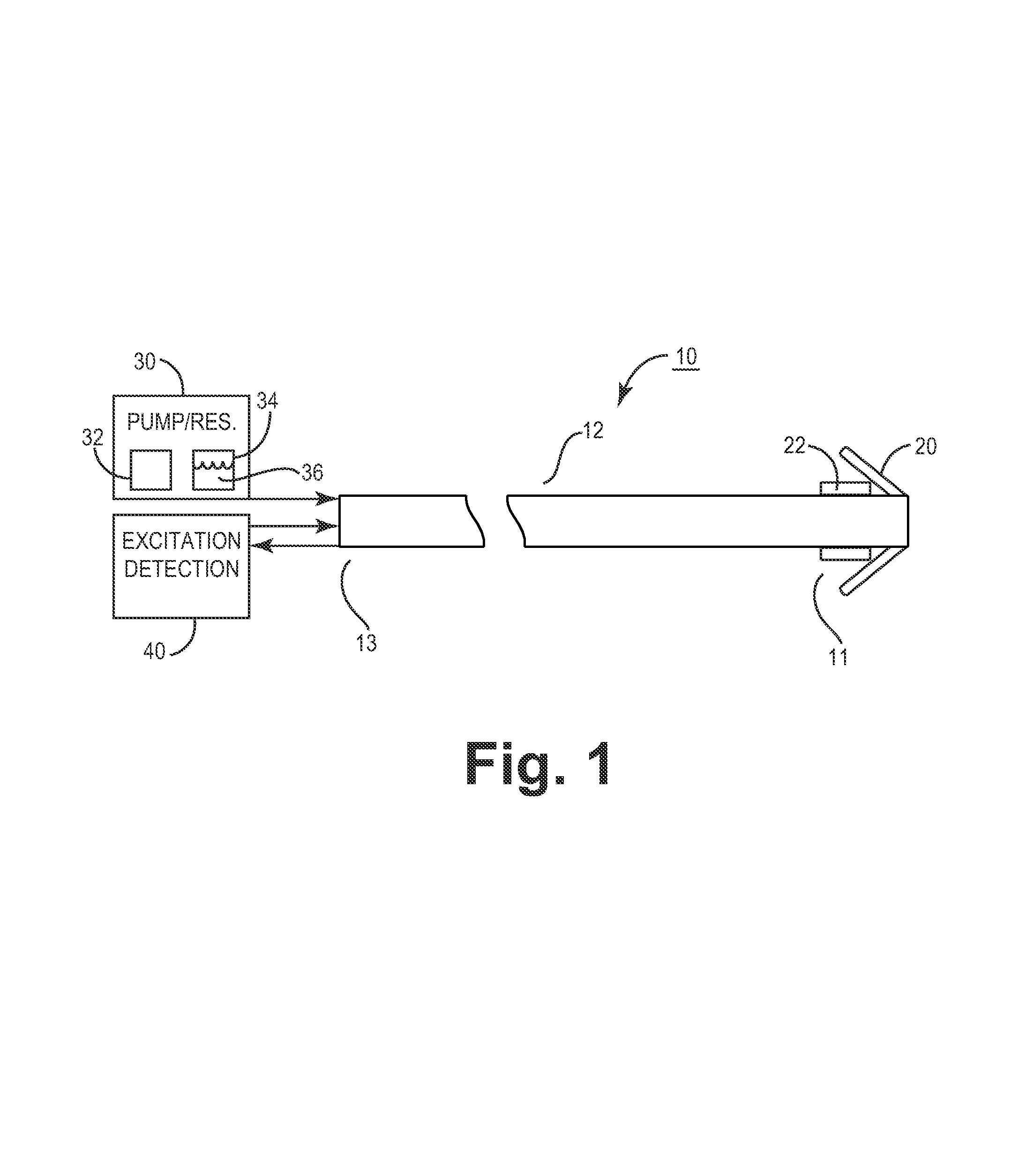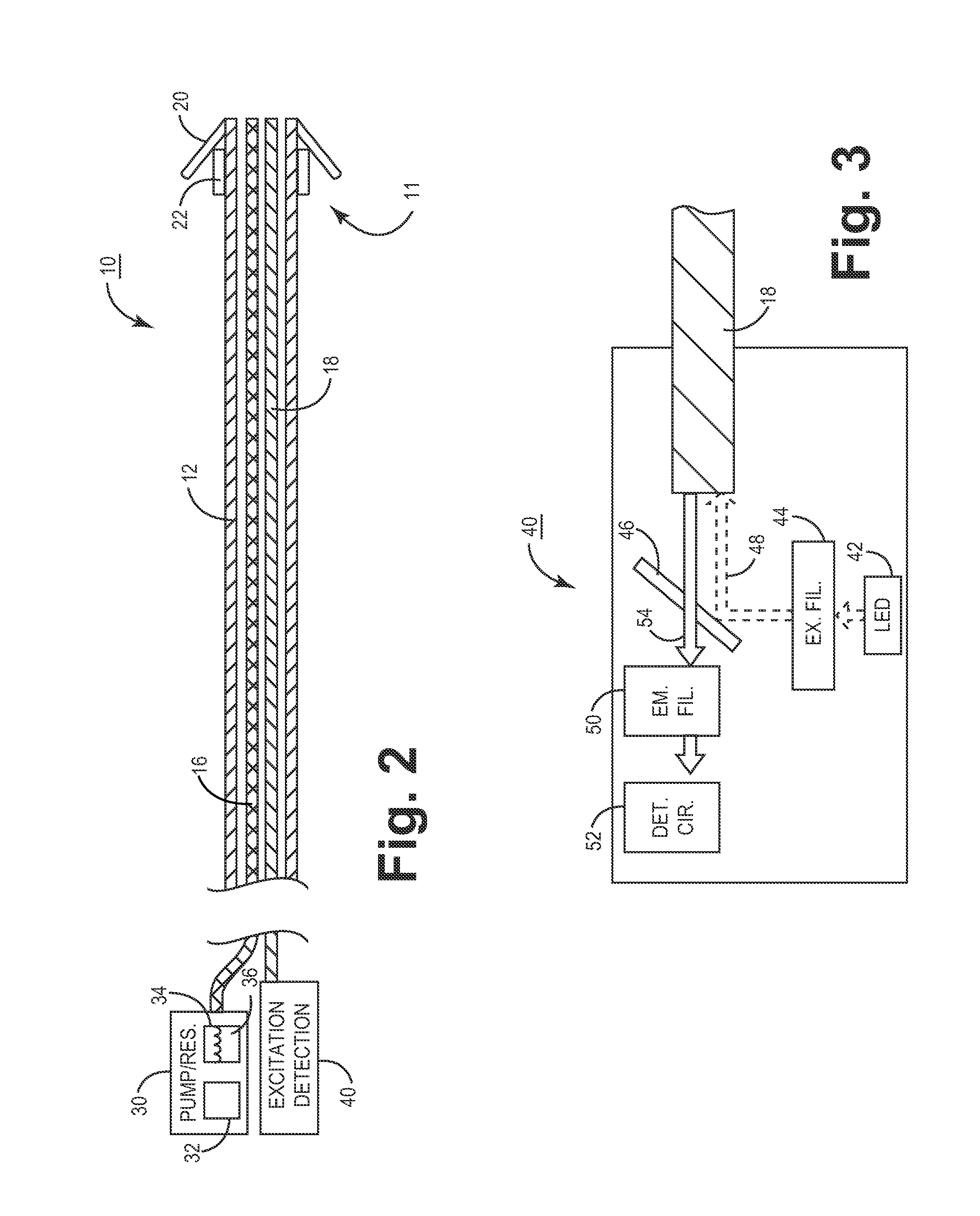Implantable medical device having optical fiber for sensing electrical activity
a technology of optical fiber and electrical activity, applied in the field of implantable medical devices, can solve the problems of electrical noise, interference with detection, and number of limitations
- Summary
- Abstract
- Description
- Claims
- Application Information
AI Technical Summary
Benefits of technology
Problems solved by technology
Method used
Image
Examples
Embodiment Construction
[0046]The present invention provides an implantable medical lead for sensing electrical activity of excitable body tissue using an optical fiber for transmitting fluorescence signals associated with the local transmembrane cellular potential changes. The lead is provided with an elongated body carrying at least a first optical fiber extending between a proximal lead end and a distal lead end that is positioned in or against excitable body tissue for monitoring local electrical activity. At the proximal lead end a connector is provided for connecting the lead to an implantable or external monitoring device for acute or chronic monitoring of electrical activity and optionally delivering electrical stimulation or other therapy. Optical excitation and photodetection circuitry are included in a lead connector assembly and / or in the associated medical device. Excitation circuitry includes a light emitting diode positioned relative to the proximal end of the optical fiber to permit emitted...
PUM
 Login to View More
Login to View More Abstract
Description
Claims
Application Information
 Login to View More
Login to View More - R&D
- Intellectual Property
- Life Sciences
- Materials
- Tech Scout
- Unparalleled Data Quality
- Higher Quality Content
- 60% Fewer Hallucinations
Browse by: Latest US Patents, China's latest patents, Technical Efficacy Thesaurus, Application Domain, Technology Topic, Popular Technical Reports.
© 2025 PatSnap. All rights reserved.Legal|Privacy policy|Modern Slavery Act Transparency Statement|Sitemap|About US| Contact US: help@patsnap.com



